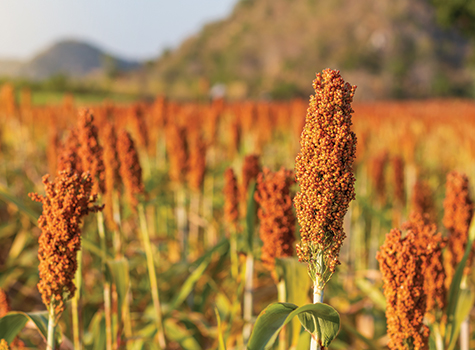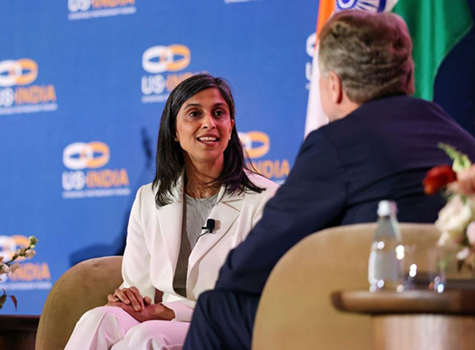
The United Nations General Assembly has declared 2023 as the International Year of Millets (#IYM 2023). The Food & Agriculture Organization of the UN is the lead agency in charge of celebrating this grain.
According to the FAO, #IYM2023 will be an opportunity to raise awareness of the nutritional and health benefits of millets and their suitability for cultivation under adverse and changing climatic conditions. This year, FAO is celebrating the International Year of Millets to help everyone rediscover the many reasons millets should be grown and eaten more.
What are Millets?
Millets have been a nutritional staple in diets throughout Sub-Saharan Africa and Asia for thousands of years. They were among the first plants to be domesticated and serve as a traditional staple crop for millions of farmers in Sub-Saharan Africa and Asia.
They are often called “Nutri-Cereals” due to their high nutritional content compared to commonly grown cereals like wheat, rice or corn. They contribute to human and animal health. Millets include a diverse group of cereals including pearl, proso, foxtail, barnyard, little, kodo, browntop, finger and Guinea millets as well as fonio, sorghum, and teff. In Indian cuisine, the most used ones are Bajri (pearl millet), Ragi (finger millet), Kangni (foxtail millet), and Jowar (sorghum).
Millets can grow on poor soils with little effort, are resistant or tolerant to many crop diseases and pests and can survive adverse climatic conditions. The genetic diversity of millets offers opportunities for economic development through income generating activities in the food sector or in niche markets for specific professional applications (therapeutics, pharmaceuticals, specialty chemistry).
Here are some key messages from the FAO-UN and the International Year of Millets:
The sustainable cultivation of millets can support climate-resilient agriculture, fight hunger and contribute to food security and nutrition.
Millets are often referred to as climate-resilient crops because they can grow on arid lands with minimal resources. With the growing global population, there is increased need for sufficient and healthy food amidst climate emergencies and depleting natural resources. Millets can be part of the solution. These grains can survive harsh climate conditions, offering solutions to food scarcity. Because they are often the only crops that can be harvested in dry seasons, millets can be a vital food source for populations vulnerable to food insecurity. By providing land cover in arid areas, they reduce further soil degradation and help support biodiversity and sustainable land restoration.
Millets can be an important part of a healthy diet.
Millets are good sources of minerals, dietary fiber, antioxidants and protein. With a low glycemic index, they are a good option for people with high-blood sugar. Millets are also gluten-free and an excellent and cost-effective source of iron for iron-deficient diets. Each variety of millets provides different amounts and types of fiber. Dietary fiber is important for regulating bowel function, blood sugar and lipids, for satiety and preventing acid reflux.
Millets offer promising livelihood opportunities for small-scale farmers.
The production of millets and the demand for them has declined as other cereals such as wheat, maize or rice became a dietary preference. By encouraging the consumption and production of these underutilized crops, we can help millets regain market share and create additional opportunities for small-scale farmers, thus boosting economic growth. Since millets are deeply rooted in many cultures and traditions, they are a strategic crop to guarantee food security in areas where they are culturally relevant.
Greater trade in millets can improve the diversity of the global food system.
Millets, including sorghum, account for less than 3 percent of the global grains trade. Millets can provide a valuable alternative to typically traded grains. This added diversity can improve the resilience of the global trade markets and mitigate our reliance on other grains.
Millets can be used in many innovative ways.
The genetic diversity of millets lends itself to many diverse and innovate applications of millets in areas such as therapeutics and pharmaceuticals. Used innovatively, millets offer even greater market opportunities for regional and international trade.
We all need to learn about millets, including their nutritional benefits and create a growing demand for them by including them in our diets. Together, we can contribute to the sustainable transformation of agrifood systems. Influencers and chefs should use millets in their recipes and menus and advocate for their consumption, while educating the public on new and appealing ways to prepare them.
Governments and policy makers need to prioritize the production and trade of millets as a way to fight hunger, build resilience to climate change. Governments and policy makers should also put millets on the menu in public places such as schools and hospitals.
Interested in recipes? Check out this Instagram page for #IYM2023 Global Chefs Challenge, where Chefs around the world are sharing videos where they show off recipes on how they love to prepare and eat millets.
instagram.com/fao/guide/iym2023-global-chefs-challenge/17945831225395468/
Parul Kharod is a registered dietitian and licensed nutritionist and works as a Clinical Dietitian. She can be reached at parulkharod@gmail.com



